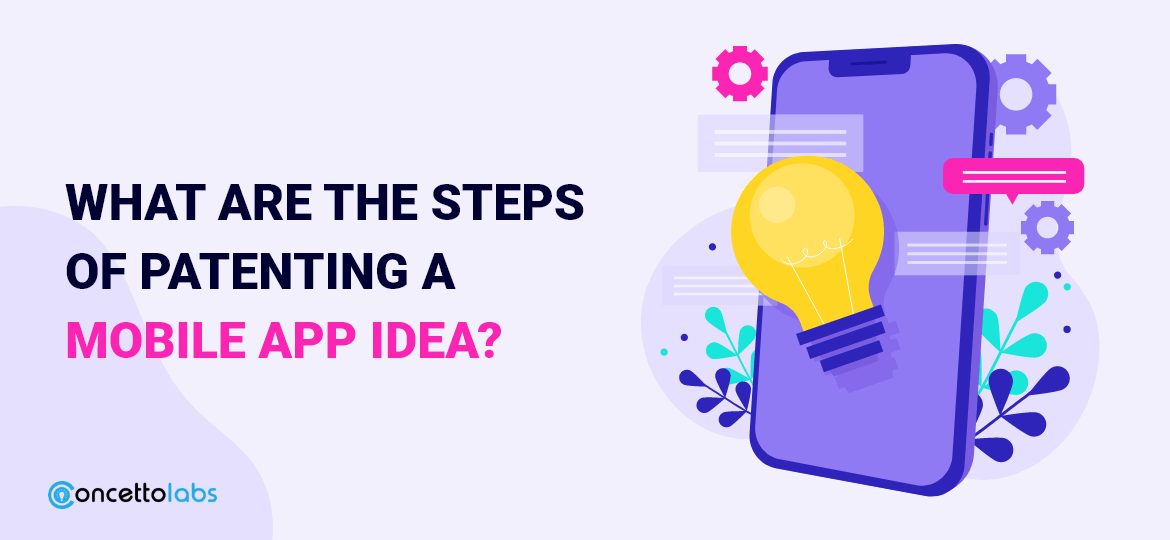
How can I Patent an App Idea?
Then the answer is: Yes, it is straightforward to patent an idea for an app.
It is necessary to patent a mobile app idea to protect it from competitors in the market who could try to steal it. However, for your app idea to be protected by a patent, it must be novel and unique. Your efforts will only be worthwhile if it is a copy of another application.
What Do Patenting Mobile App Ideas Mean?
Patenting means exclusive rights over an item or concept granted by the government. A patent is a power given to a person or business to safeguard their invention. With a patent, you have complete authority over your creation as the law construes it. No one can copy, steal, or sell your invention once it has been patently protected.
All you need is an innovative, revolutionary concept. It is only necessary that your concept be innovative and revolutionary.
Once your app idea has been granted a patent, it will be protected by WIPO’s intellectual property rules. If someone else wants to use your app idea, they must first get your permission.
The three main elements that make up the patent application or concept are
- Only you may assert benefits or earnings from your app idea.
- No company or individual has the right to sell or exploit your app or its idea unless you grant permission.
Importance of Mobile App Patenting
If your mobile app concept is original, it is wise to patent it. The reason for this is that it might be copied or stolen by someone else. Another thing to consider is that if you have a valid patent, you can utilize the law to have anyone who uses your concept pay you.
You may also feel the need to patent an app idea for the following reasons:
- Preventing unauthorized individuals from monetarily exploiting your concept
- Enables you to file a lawsuit against anyone who releases a copy of your software either before or after you do.
- Additionally, a patent legally establishes the originality and distinctness of your mobile app concept.
- Unless you have a patent as evidence of your idea, there is no need to get caught up in legal muddles.
List of Eligibility Criteria for a Mobile App Patenting
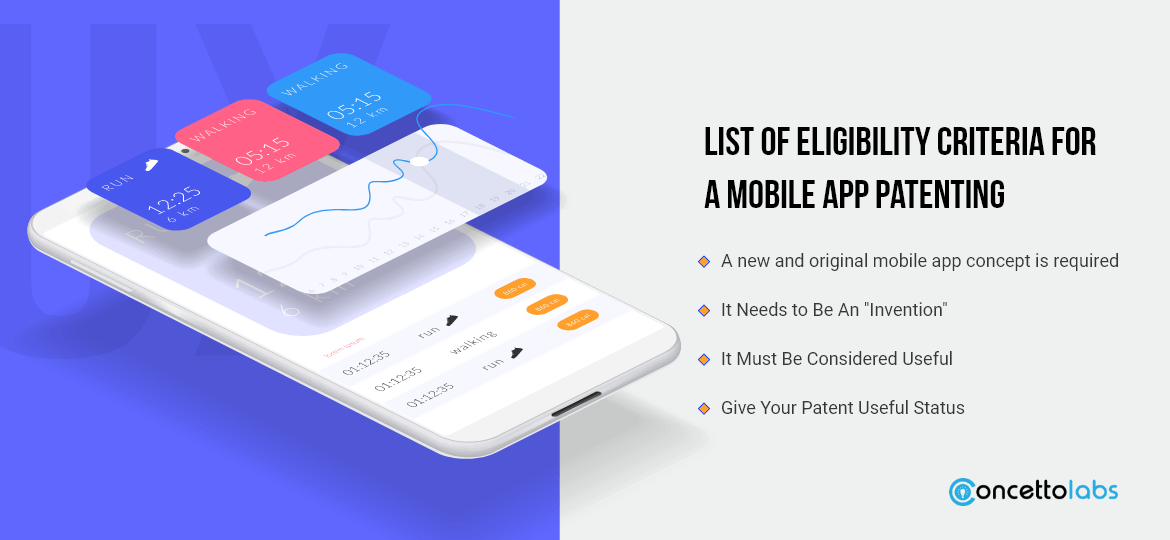
1. A new and original mobile app concept is required.
Your app concept must be original. It does not say your app idea is eligible for the patent if it solves a consumer problem. Simply put, you should only divulge your app idea through books, papers, or other media if it has been developed publicly.
2. It Needs to Be An “Invention”
In general, patents are the best form of invention protection. The World Intellectual Property Organization (WIPO) claims that a patent is a problem-solving tool.
3. It Must Be Considered Useful
Your application idea can fall outside the entertainment or another similar area to qualify as a helpful app. The app only needs to work theoretically. It prevents people from patenting useless apps. Patenting these useless apps is prohibited by this prohibition. The description of how your app works must be thorough and specific if you wish to claim it as an asset.
4. Give Your Patent Useful Status
Finally, you must declare your patent to be beneficial. It states that your software should work theoretically. It can be challenging to obtain an app patent if it is not as beneficial as it should be.
What Are the Factors You can Patent of your Mobile App?
- Data privacy procedures
- Mobile transfers, transactions, server involvements, etc., from third parties.
- Many features of networking
- Identity management, security, and user authentication
- Pushing data, storing it, and managing databases
- Interaction between servers and mobile devices
- Processing of server and mobile interaction
- Presenting users’ content
Which are the Types of Patent Mobile Applications?
Provisional App |
Non-Provisional App |
| Will only be published and granted a patent after a non-provisional application is made. | It typically takes 18 months after filing and could become a patent in 24 to 28 months. |
| Less costly | Expensive |
| To continue patent, you will need to register it yearly | handled exclusively by the patent and trademark office, and if no provisional application is made, it can be granted as a patent. |
| gives you the legal right to brag that your mobile app concept has a patent pending. | |
| By submitting applications, you can get international patents and assert the priority within a year. | |
| You incur lower costs with this application type than with a non-provisional application |
How to Patent an App Idea?
Step 1: Determining the Type of Patent You Need
It would be best if you chose the patent kind that is most appropriate for your mobile application. There are three primary categories of patents from which to select:
Utility patents: These kinds of patents protect the practical elements of discoveries or new products. A utility patent is the most appropriate form to pursue a mobile application patent. The duration of a utility patent is between 14 and 20 years.
Patents on designs: These patents protect the aesthetically pleasing features of any invention or product. The validity of design patents ranges from 14 to 20 years.
Step 2: Carry out a Thorough Patent Search
Investigate your app idea thoroughly to see if it has previously been developed and patented. The likelihood of your patent being issued quickly will be increased if there are no other similar applications or patents. To prevent any unanticipated infringement from other businesses, conduct global research.
Step 3: Consult a Patent Attorney to Register.
You should speak with and hire a patent attorney specializing in software patenting to offer a precisely created top-notch patent and increase the chances that your patent application will be accepted. Skills are necessary for this.
Given that it is a legal procedure, litigation may be involved. Hire a professional rather than trying to do it yourself.
It is not advised that you hire the first lawyer you come across. Make a thorough investigation and seek the most excellent options within your means.
Step 4: Organize and Submit your Patent Application
You can start the patent application procedure after you are confident that a patent does not already protect your app idea. The following requirements should be present in an application.
- Describe the steps to develop an app.
- Working apps
- drawings and diagrams where necessary
- the layout of the app
- Include complete details in the application to decide whether your app idea is original or non-obvious.
Step 5: Register a Patent: Non-provisional or Provisional
It is time to submit your patent application once you have included all the necessary information about your innovation in the application. Apply with the appropriate governmental organizations, such as the United States Patent and Trademark Office (USPTO) in the United States, to get the patent. An app patent application procedure could require several years and multiple review stages.
Step 6: Prompt Response to all Office Actions
The patent examiner will study your application once the payment for the patent application has been made. There is a risk that the examiner will issue a written office action asking for more application-related communication. The application you submitted might need to be modified or require further clarification of this request.
To prevent any process delays, it is crucial to attentively and promptly respond to the action request.
Step 7: After Your App Is Patented, Pay the Maintenance Fee
If your patent application is accepted, it will require ongoing upkeep to be in effect. To keep your app patent alive, you must pay monthly or yearly.
Your app’s patent application procedure could take time and effort. To help you navigate the entire patenting procedure, it is advised to contact a patent attorney.
Now that you know the procedure for patenting an app, let us walk you through some more crucial queries that may help you decide whether to patent your app.
Step 8: File a Patent Application
The process of patenting a mobile app idea ends here. After completing the processes above and drafting a patent application, you must submit it to the USPTO. The process is time-consuming and requires a lot of paperwork, but it’s worth investigating. You could require specific essential papers for this process, such as:
- Oath/Declaration
- Form for Entity Status
- Specifications
- Statement of Information Disclosure
- Claim status
- Data Sheet for Applications (ADS)
- Drawing
- International Filings under the Patent Cooperation Treaty (Optional)
- Cost Sheet
- Cover Page
What Is the Price to Patent a Mobile App?
Undoubtedly, a mobile app patent’s price varies depending on the patent type. Provisional patents cost between $3500 and $6000. Using a provisional patent, you can improve your app and release it to gauge marketability. A provisional patent’s validity ends a year after it is granted.
Non-provisional patents often cost between $10000 and $15,000. As a result, an administrative body examines your patent application over the years to determine whether it merits a patent.
What Are The Alternatives To App Patenting?
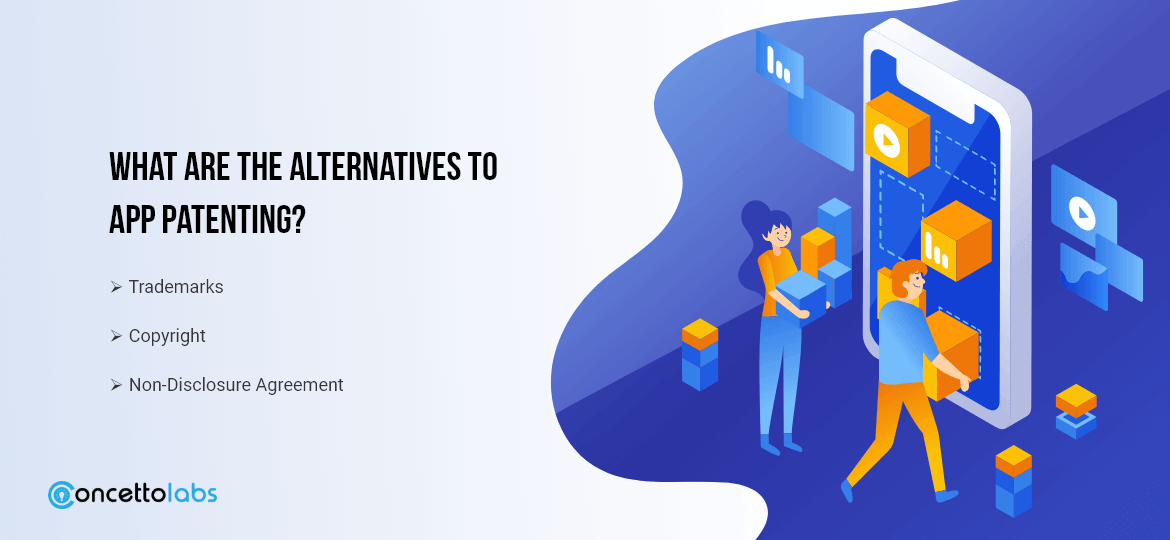
Making information about your innovation publicly accessible is another option for patent protection, sometimes known as “open sourcing.” This prevents someone else from obtaining a patent for the same thing while allowing your competitors to use the invention without restriction for their own gain. Check out the 3 main alternatives for patenting an app idea.
1. Trademarks
Patents with trademarks prevent others from producing or selling your idea. Instead, a trademark prevents competing brands from utilizing expressions, words, logos, symbols, and other devices that help identify the originator’s goods and services.
To stop your competitors from copying your app’s logo and confusing customers, you can register it as a trademark.
2. Copyright
Copyright is a type of IPR, just like patents. The creator or inventor of any work, whether musical, artistic, literary, educational, or a computer program, is granted certain rights by law. In addition, it gives them permission to copy the work, distribute it, create derivative works, etc., whether or not it is currently available.
It also protects the expression of ideas rather than just the concept themselves. Therefore, since the app logo doesn’t cover concepts, facts, operational procedures, or systems, we can copyright an app idea itself.
3. Non-Disclosure Agreement
NDA is a document signed by the organizations you operate with. It typically exists between you and the firm that created your app. It legally obligates them to keep your app’s technical details and concepts secret. In turn, it prevents unauthorized users from making use of the idea.
Final Thoughts
If you have any doubts about how to patent an app idea or about whether patent protection is appropriate for you, a skilled software patent attorney can assist you. With the patent application process, even the attorney might be of assistance. To prevent others from stealing your concept, you must obtain patent protection for your innovative and non-obvious inventions. You can ask your queries to the top mobile app development company and get solutions easily.


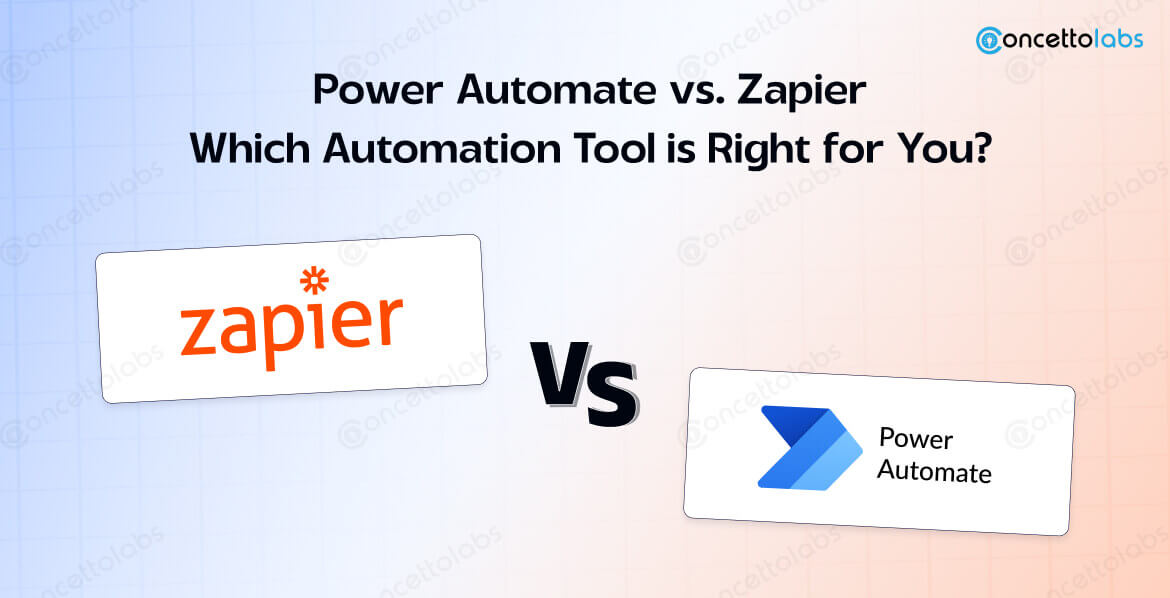
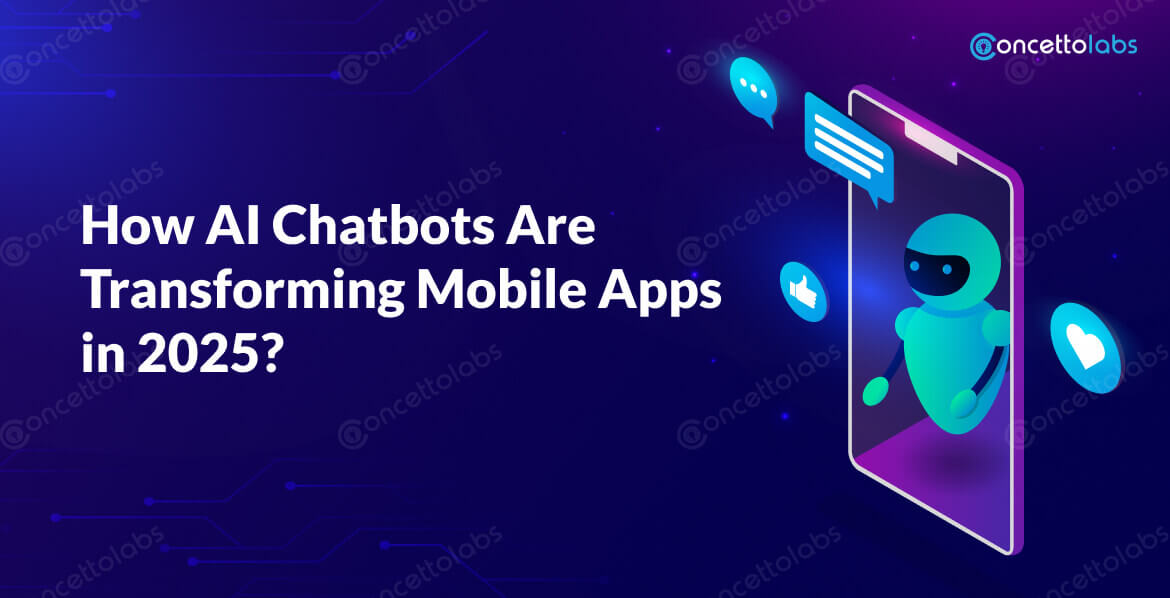





 Indonesia
Indonesia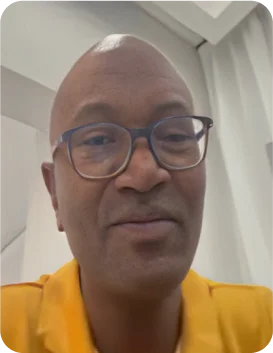
 Botswana
Botswana
 USA
USA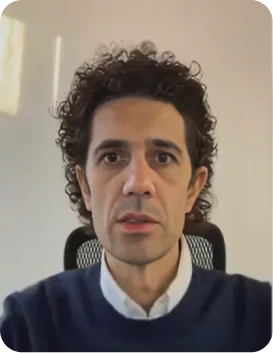
 Italy
Italy
 Panama
Panama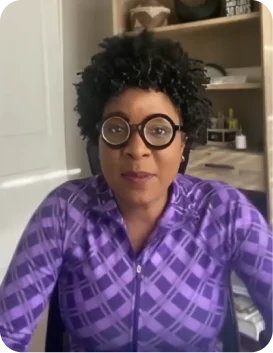








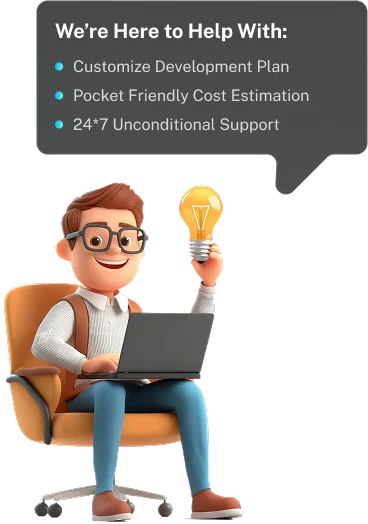
 USA
USA UK
UK Saudi Arabia
Saudi Arabia Norway
Norway India
India Australia
Australia